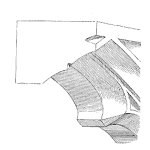
Guest Post by Dianna Deeney (first posted on CERM ® RISK INSIGHTS – reposted here with permission)
New product development engineers are managing risks, daily, with each design decision: unknown risk in creating something new, risk introduced through a failure, human factors risk, and other risks related to products and services. Their design decisions affect downstream activities (from production through disposal) and the bottom-line success of the product in the market. How can engineers manage these risks through the design process?
Proactively managing risks can be an iterative part of product design engineering. Risks can be managed at the early concept phases of development when changes to the design are easier to make. Finding and addressing risks also helps the team to avoid surprises late in development and after the product has been released to the market. The results are not only managing risks but also managing the design process for a more successful product.
[Read more…]












